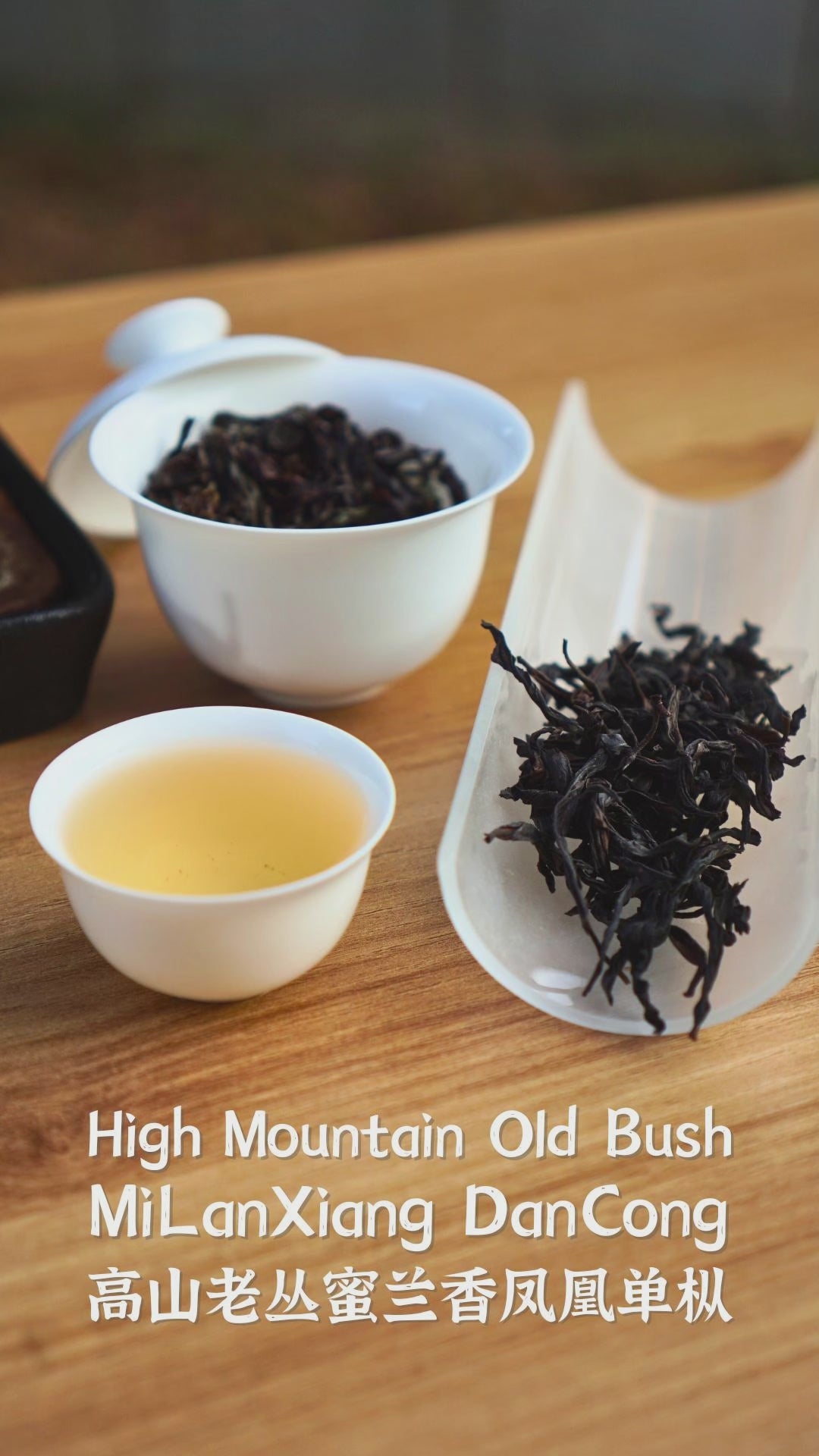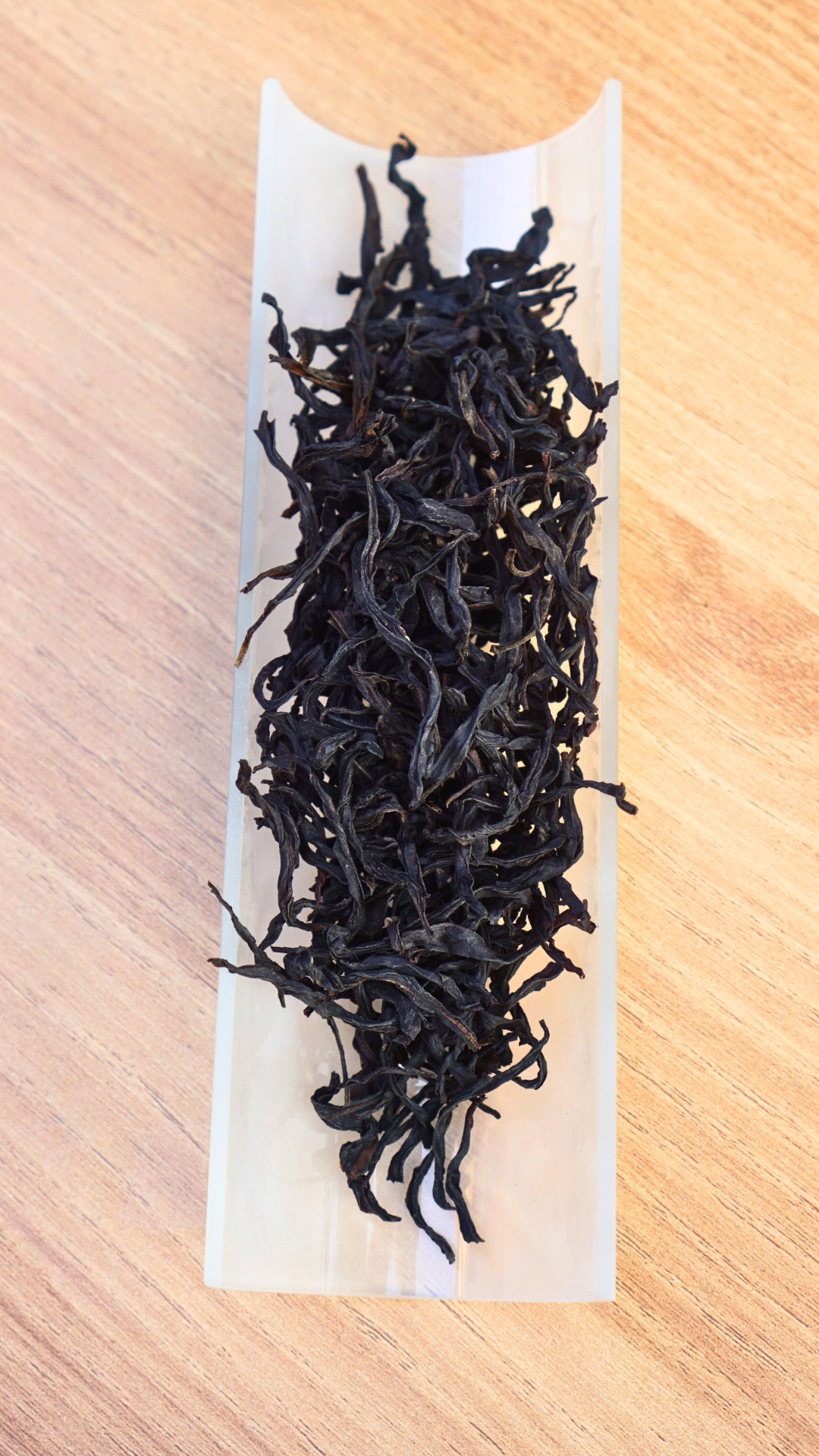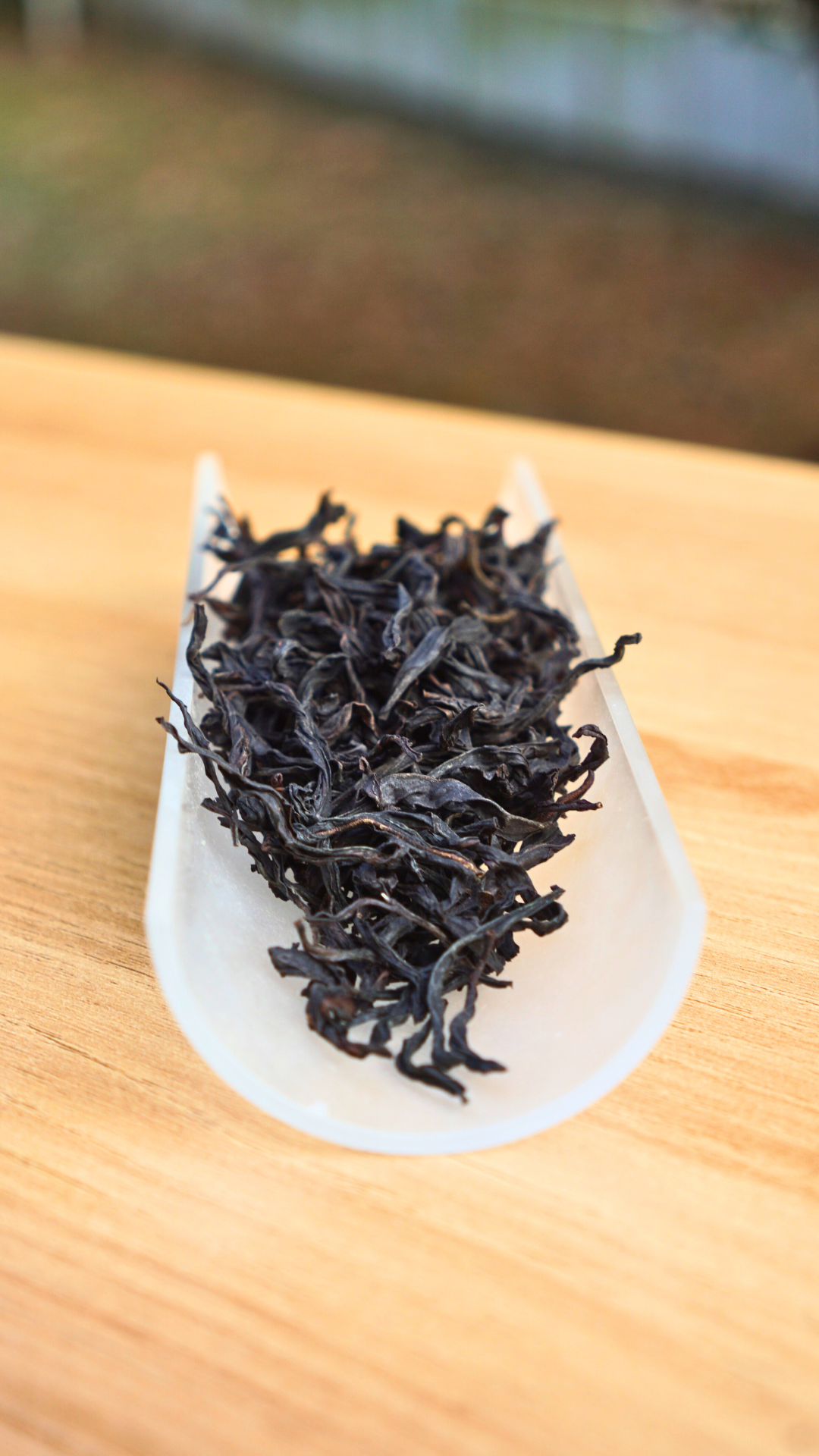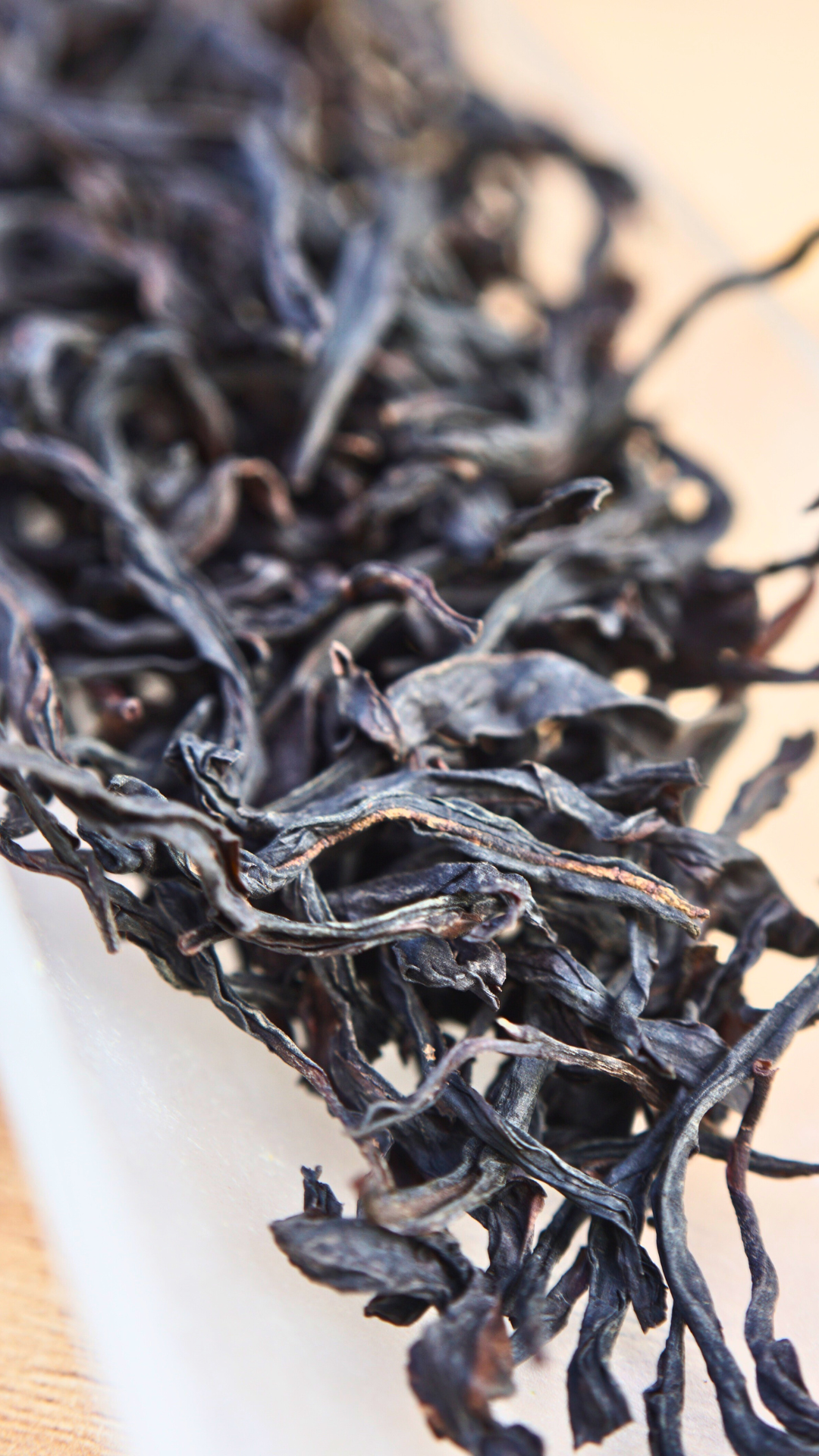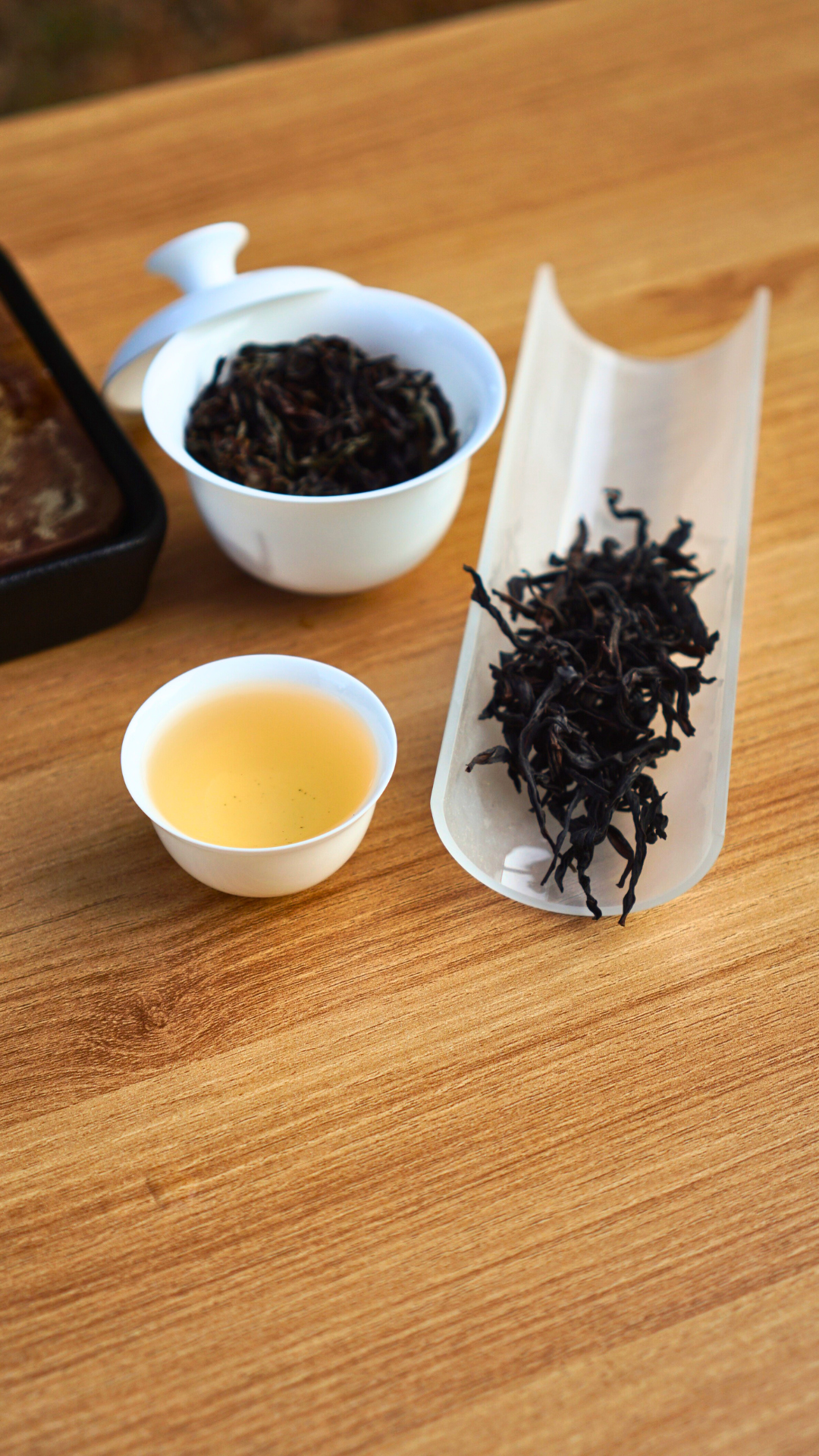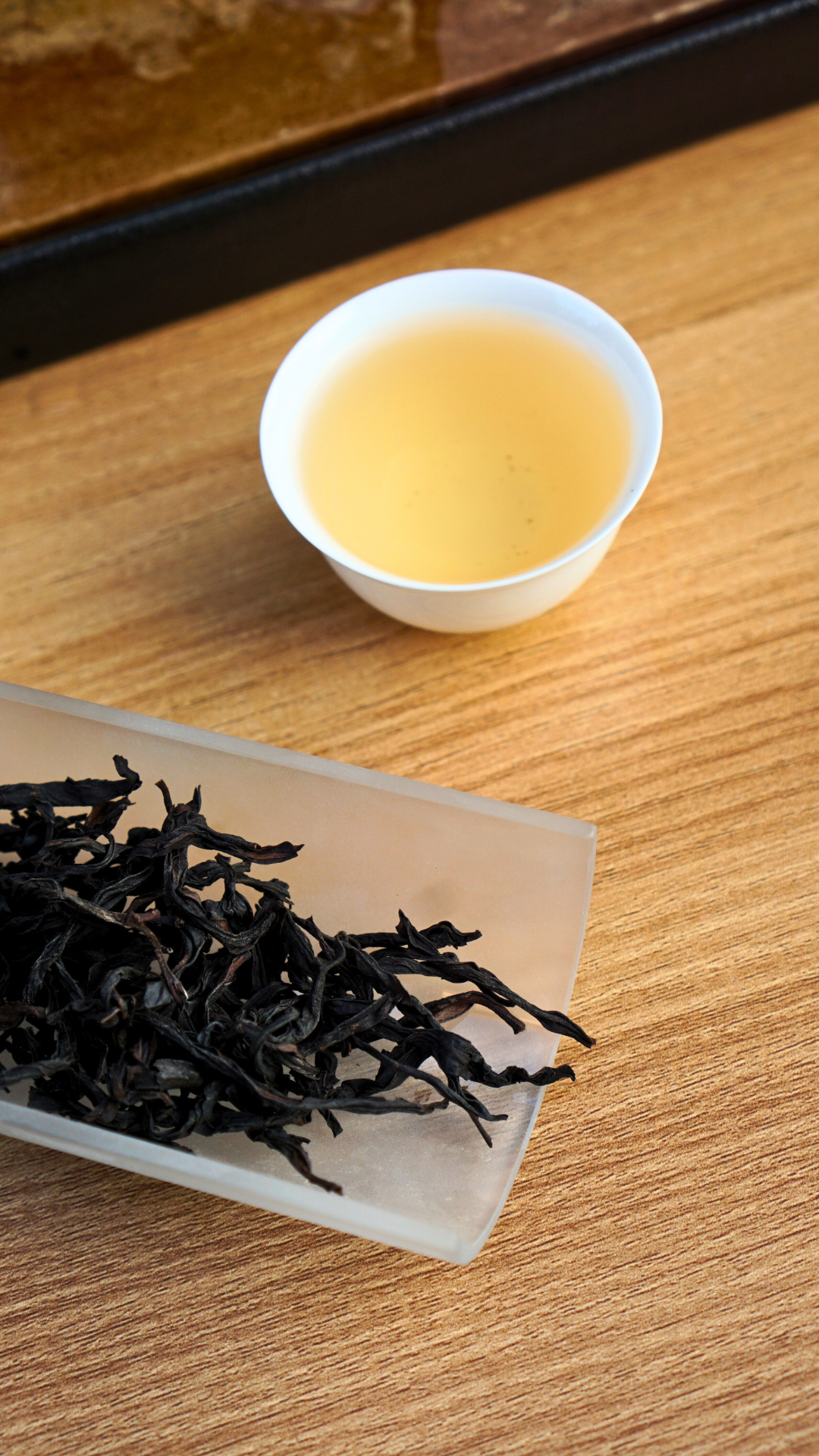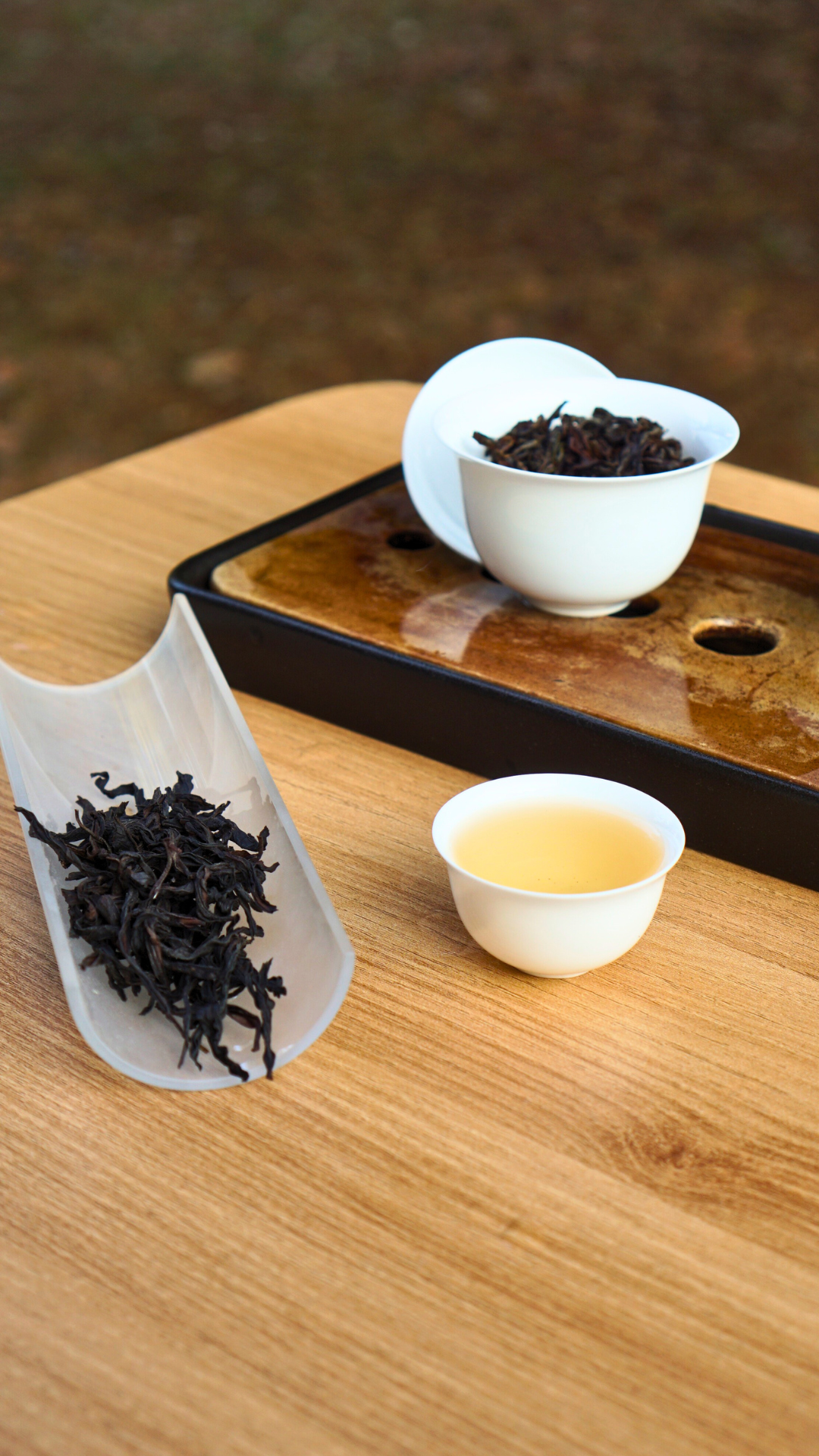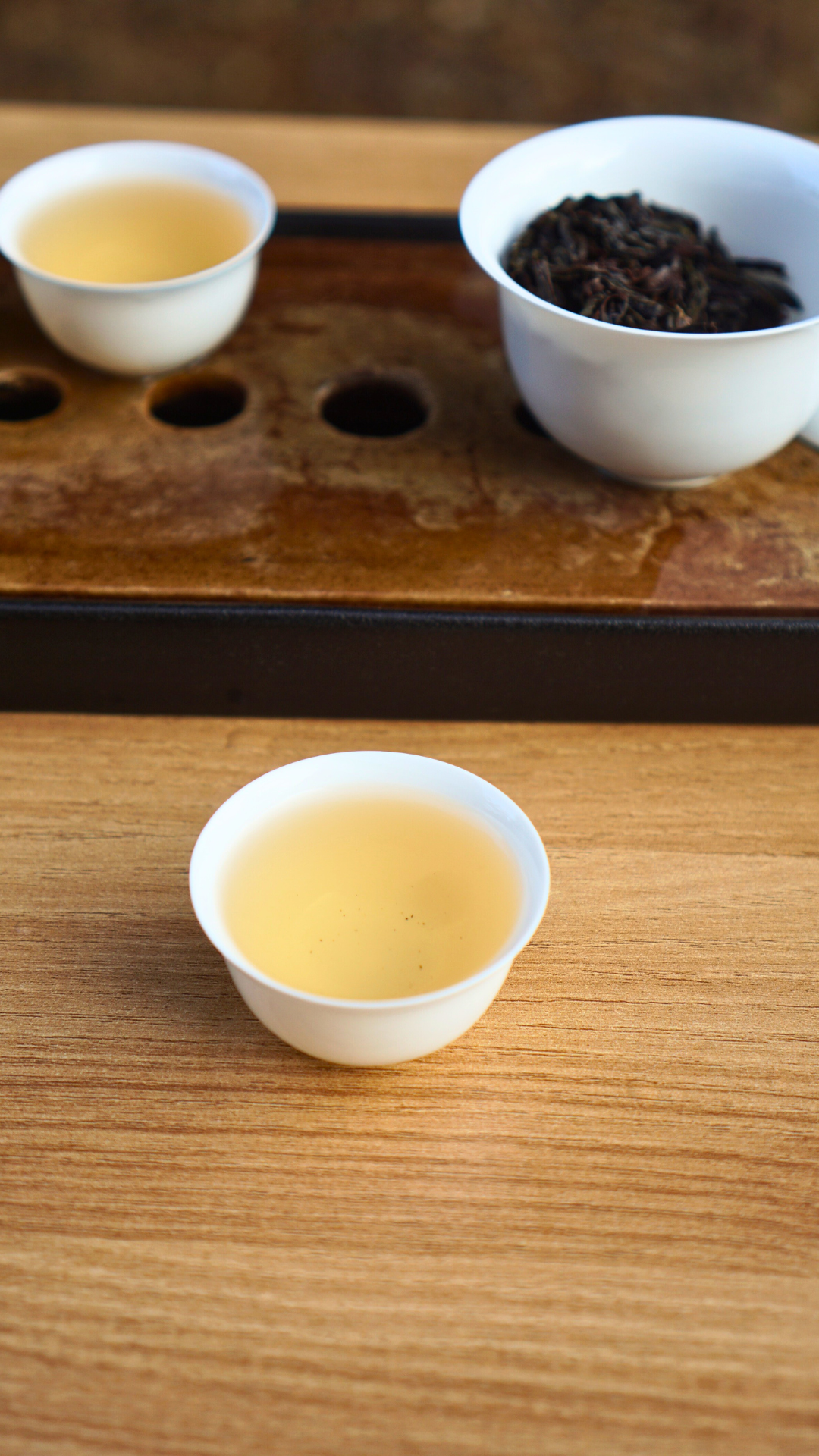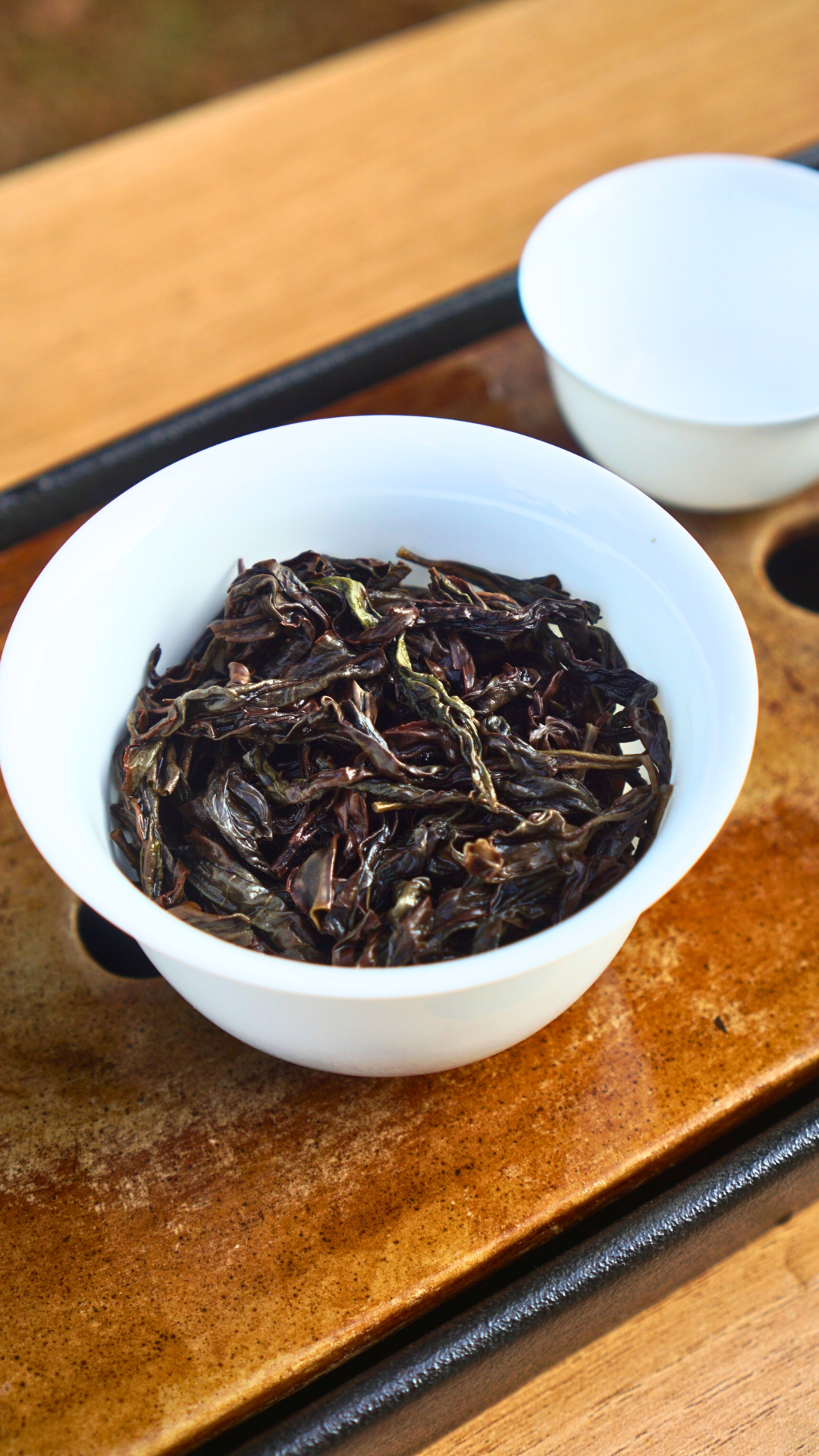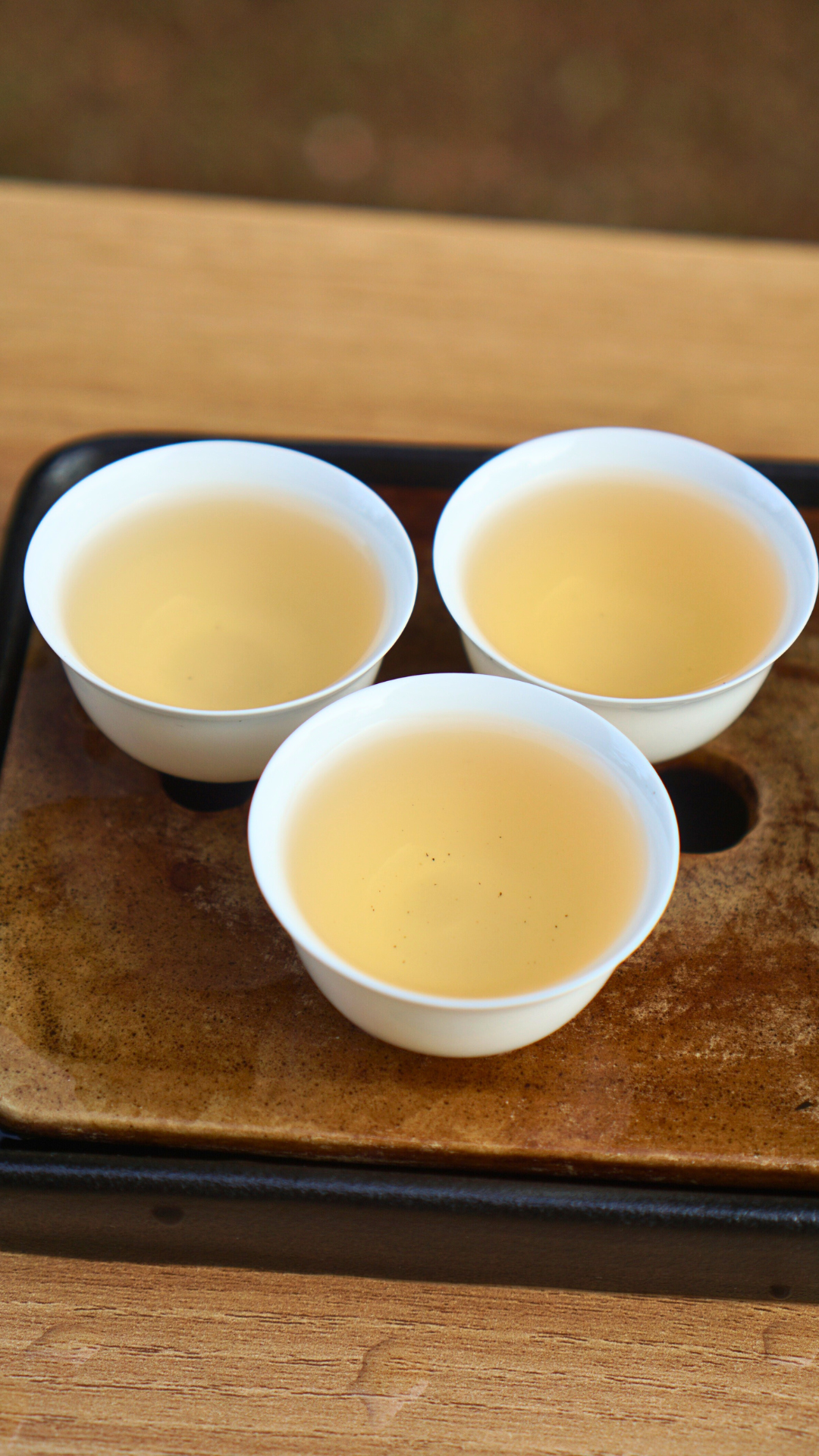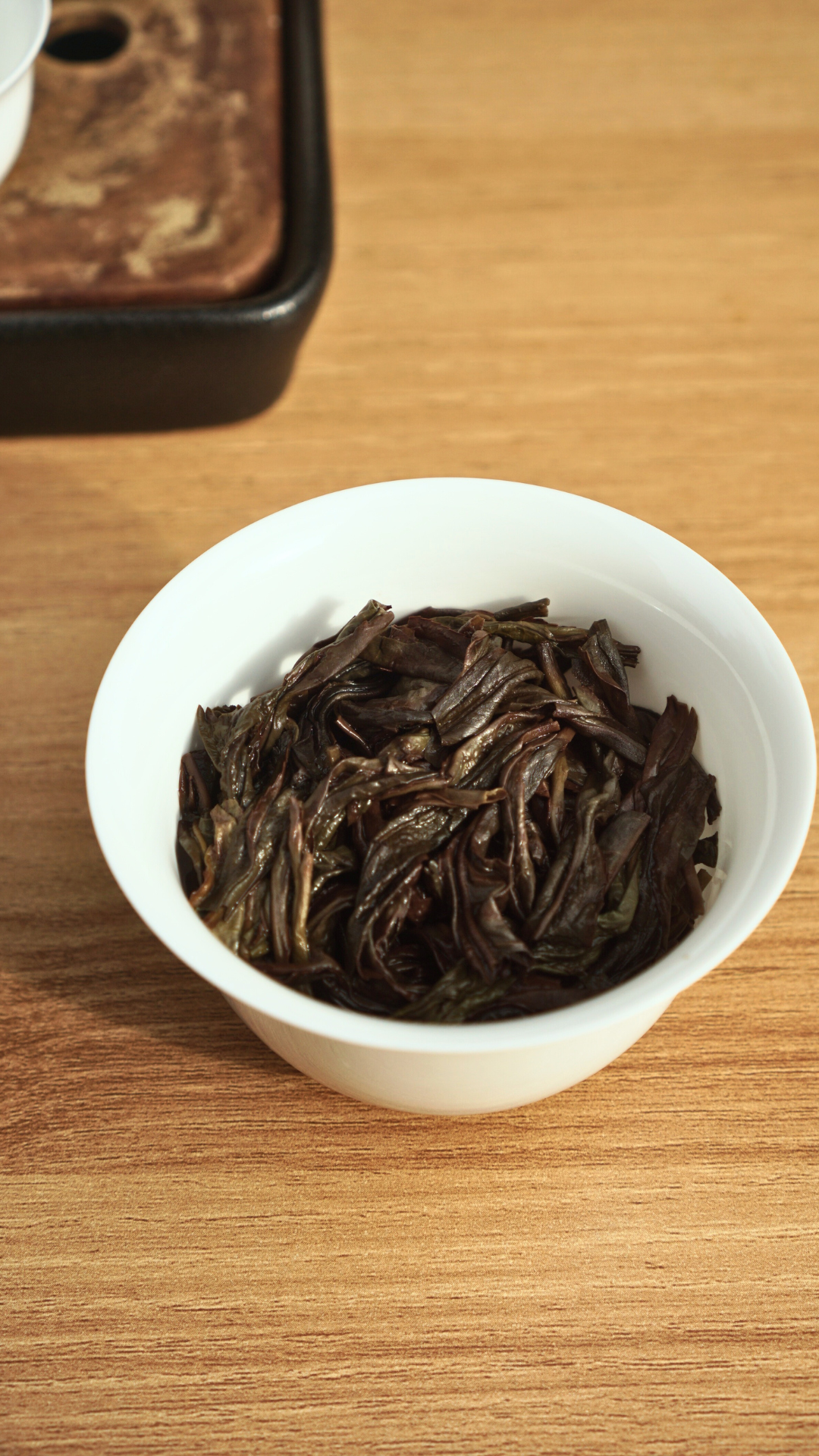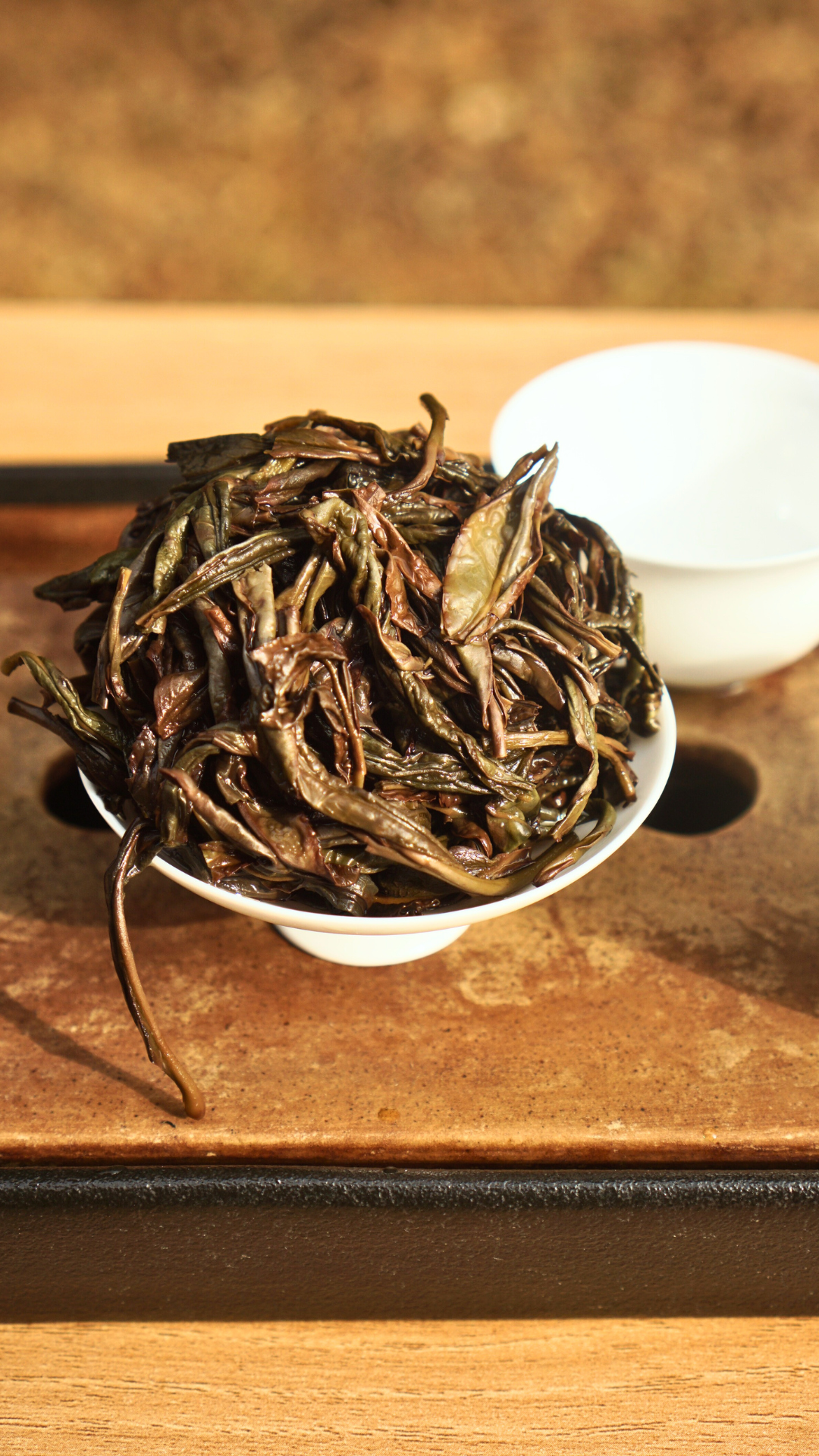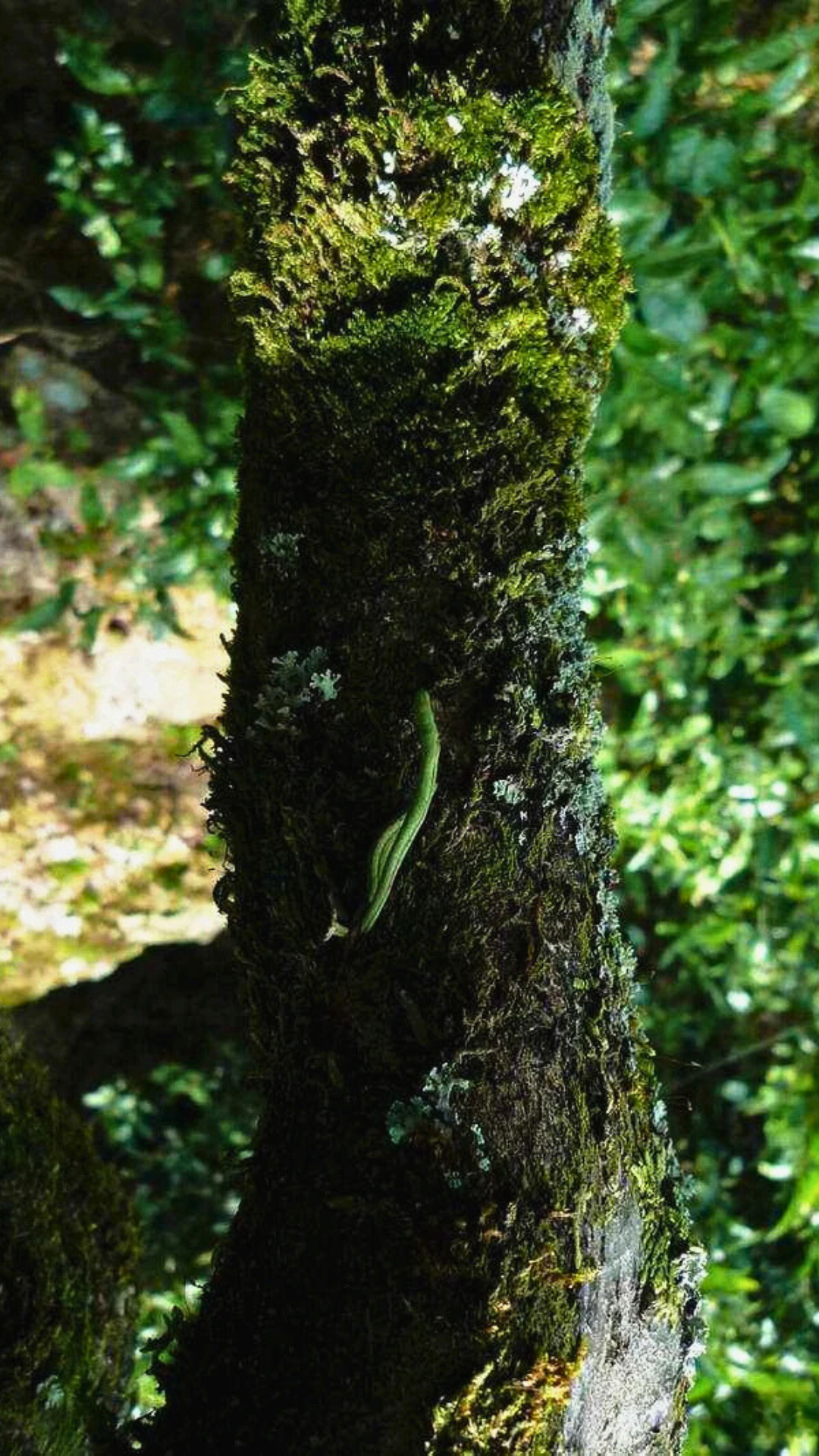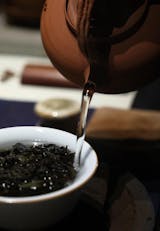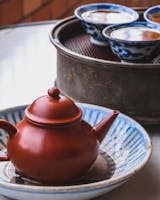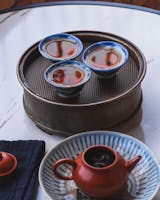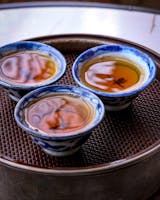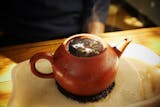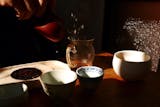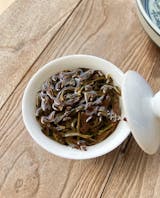High Mountain Old Bush Mi Lan Xiang
High Mountain Old Bush Mi Lan Xiang
高山老丛蜜兰香凤凰单枞
This High Mountain Old Bush Mi Lan Xiang FengHuang DanCong(Honey Orchid Aroma Phoenix Single Bush) tea comes from the high mountain tea gardens of Fengxi Village(凤溪村) in Fenghuang Town(凤凰镇), Chaozhou(潮州), Guangdong, at an average altitude of over 800 meters. The fresh leaves are picked during the first flush from old tea trees aged 50 to 100 years.
The dry tea leaves are tightly twisted, slender, tender, and stemless, with a lustrous and oily appearance. It carries the sweet aroma of honey combined with baked sweet potatoes.
The tea soup is bright orange-yellow, sweet, smooth, and mellow. Upon sipping, a honey aroma emerges, blending with a sweet and moist flavor to form a complex, layered taste. It has a distinct honeyed flavor and orchid fragrance, with a sharp, full-bodied, and rich aroma. It offers strong aftertaste sweetness, a lingering mountain charm, and a pronounced "bush flavor."
This tea is highly resistant to brewing. Its overall soup texture and sweetness remain balanced. From the second brew onward, the aroma becomes prominent, gradually diminishing the honey fragrance around the twelfth brew, and the sweetness starting to weaken by around the fourteenth brew. However, even toward the end, the tea soup remains smooth and mellow, with no wateriness.
The tea leaves after brewing are soft, shiny, and evenly brown, dark green, with noticeable red edges.
The Mi Lan Xiang Dan Cong tea has a honeyed flavor and a sweet, smooth entry. For many people new to Dan Cong teas, this fragrance profile is easier to accept, making it one of the ideal varieties for beginners.
As for this High Mountain Old Bush Mi Lan Xiang, it represents a higher-quality example of Mi Lan Xiang Dan Cong tea. It embodies both "mountain charm" and "bush flavor." This tea is an excellent choice for those beginning their journey into FengHuang DanCong teas. With a tea of this quality as a benchmark, one can easily assess the quality of any FengHuang DanCong tea in the future!
Why Choose "High Mountain Old Bush" Tea?
The main component of tea polyphenols is catechins, which are also the primary contributors to bitterness. However, oxidized tea polyphenols can combine with caffeine to form complexes that impart a fresh and pleasant flavor. Thus, good Dan Cong teas often have high tea polyphenol content but relatively low catechin levels. This is the hallmark of teas grown in high mountain old bush environments. High mountain Dan Cong teas are characterized by high fragrance, strong durability in brewing, and intense sweetness in the aftertaste without bitterness. These characteristics are commonly described by Chaozhou tea enthusiasts as "mountain charm(山韵)."
Another feature of high mountain teas is their excellent growing environment, leading to predominantly aged tea trees. As a result, high mountain teas are often also old bush teas, which exhibit both "mountain charm" and "bush flavor." The so-called "bush flavor" is naturally tied to the age of the tea trees. The age of the tea tree, often referred to as the "bush age," indicates its lifespan. In the FengHuang tea region, tea trees aged 50 years or even up to 100 years are classified as "old bush." Tea connoisseurs often evaluate old bush teas based on their unique "bush flavor(丛味)."
What exactly is "bush flavor"? Opinions among tea connoisseurs may vary. Some say it's due to the moss growing on the old trees, imparting a subtle mossy note. Others attribute it to the woody character derived from the tea's age and woodiness of the old bush itself.
In my opinion, the root cause lies in the fact that older tea trees generally develop deeper and more extensive root systems, allowing them to access and absorb more nutrients. Moreover, as tea trees age, their trunks become thicker and can store a greater amount of nutrients, which in turn contributes to producing better-flavored tea leaves.
Storage
Storage
After Phoenix Dancong tea is produced, we judge when it can be consumed based on the degree of roasting. Lightly roasted Dancong tea can be generally consumed after being stored for 3-5 days to allow the fire to dissipate. On the contrary, heavily roasted tea requires a longer time for the fire to subside, usually at least about a week.
Classification by Degree of Roasting:
Light-Fragrance Type
Refers generally to lightly roasted tea. The aroma is typically excellent within three months, and if stored properly, it remains outstanding for 2-3 years. Examples include Xuepian tea, autumn tea, and lightly roasted spring teas (commonly featuring varieties famous for their strong fragrance like Ya Shi Xiang, Da Wu Ye, Gong Xiang, Ye Lai Xiang, etc.).
Mellow-Fragrance Type
Refers generally to tea leaves roasted with medium heat. This type of tea typically exhibits both a rich aroma and a fresh fragrance, with a pleasant taste that is much loved by tea enthusiasts. With the increased degree of roasting, the aroma and flavor of the tea are brought to perfection, with the best drinking period being within three years. When properly sealed and stored, mellow-fragrance Dancong tea becomes smoother over two years, and its aroma deepens into the tea liquor.
Strong-Fragrance Type
Refers generally to tea leaves roasted with high heat. This type of tea requires a relatively long time for the fire flavor to dissipate, but the tea is suitable for longer storage. The best drinking period is generally between 3-5 years. The main varieties of this roasting style include Shuixian, Baxian, Mi Lan Xiang, Da Wu Ye, and Ao Fu Hou, among others.
Most Dancong teas share a common characteristic: they develop a richer taste over time due to post-fermentation. However, it’s somewhat oversimplified to claim that Dancong tea can be stored indefinitely. This is because after a certain storage period, the tea will begin to exhibit aged flavors. Typically, aged flavors become noticeable after more than five years, which is why we often recommend a storage duration of 3-5 years.
The moisture content of Phoenix Dancong tea after refinement is 3.5%~4.5%, not exceeding 5%, and it does not require refrigeration for storage. When storing at home, it is important to consider four factors: moisture-proofing, light-proofing, avoiding breakage, and odor prevention.
1. Using Sealable Purple Clay or Ceramic Containers
These types of containers, especially purple clay tea canisters, are the most suitable for storing loose Pu'er tea. They can block light, prevent moisture, and the unique breathability of purple clay vessels can assist in the transformation and aging of raw Pu'er tea.
First, clean the purple clay container thoroughly, and once it is dry, you can store loose Pu'er tea in it.
Note that while purple clay containers are excellent at blocking light and preventing moisture, you should still avoid direct sunlight to prevent the container from overheating. Also, due to the micro-porous structure of purple clay, it is essential to prevent the storage environment from containing odors.
2. Using Cardboard Boxes for Storage
Although purple clay containers are ideal for storing loose Pu'er tea, they can be expensive. If you need to store a large amount of tea, cardboard boxes are a viable alternative.
Choose boxes with good thickness and strength. First, place the loose Pu'er tea into clean, food-grade plastic bags or aluminum foil bags, and then place these into the cardboard box for storage.
*Storage Tips:*
Do not place the cardboard box directly on the floor, as it can absorb ground moisture. Ideally, place it on a shelf or inside a cabinet.
Avoid direct sunlight.
Avoid placing the cardboard box in environments with mixed odors, such as kitchens or dining areas.
- Loose Oolong Tea
- 500g/pouch
- Free Shipping
Couldn't load pickup availability
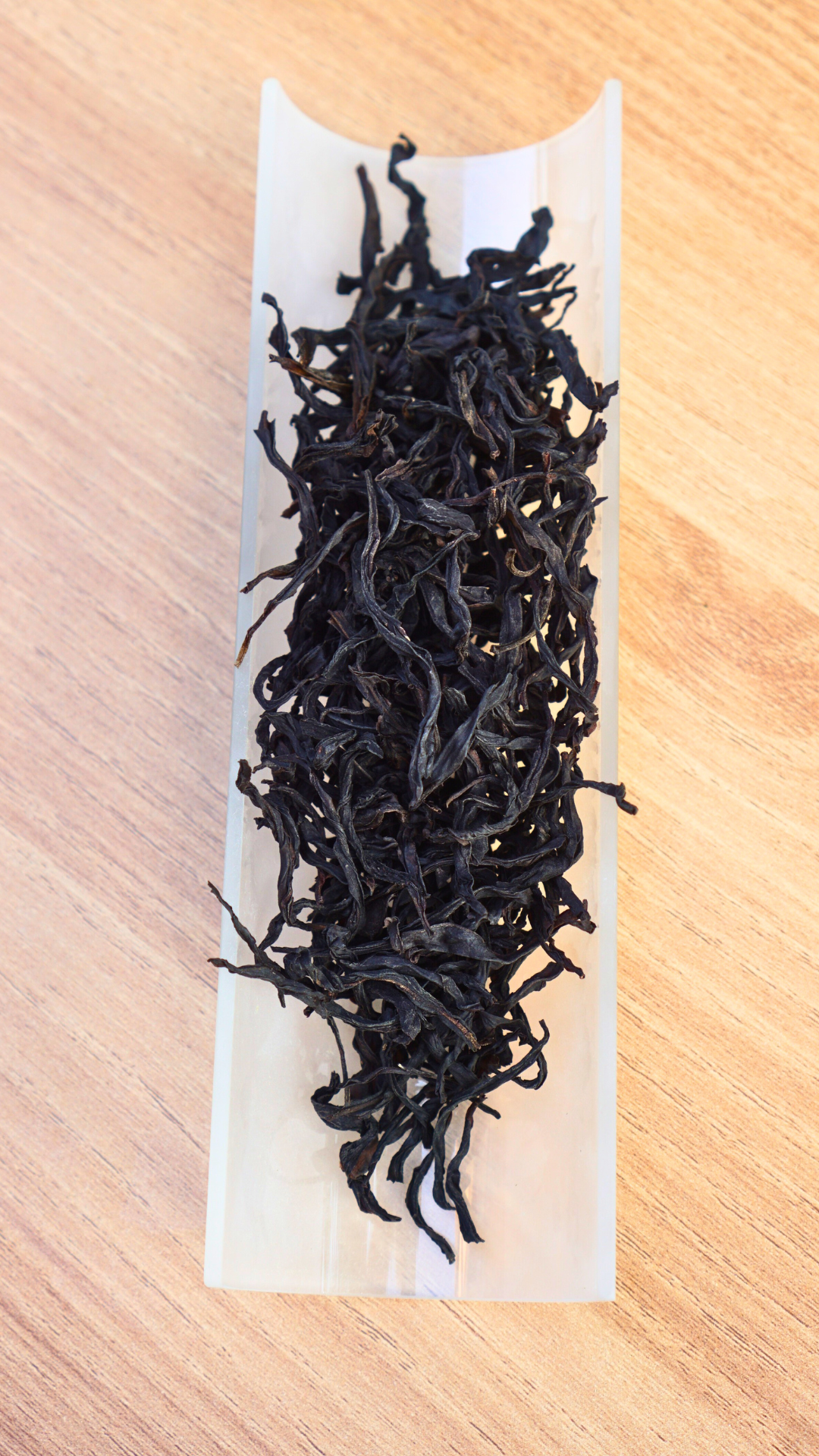
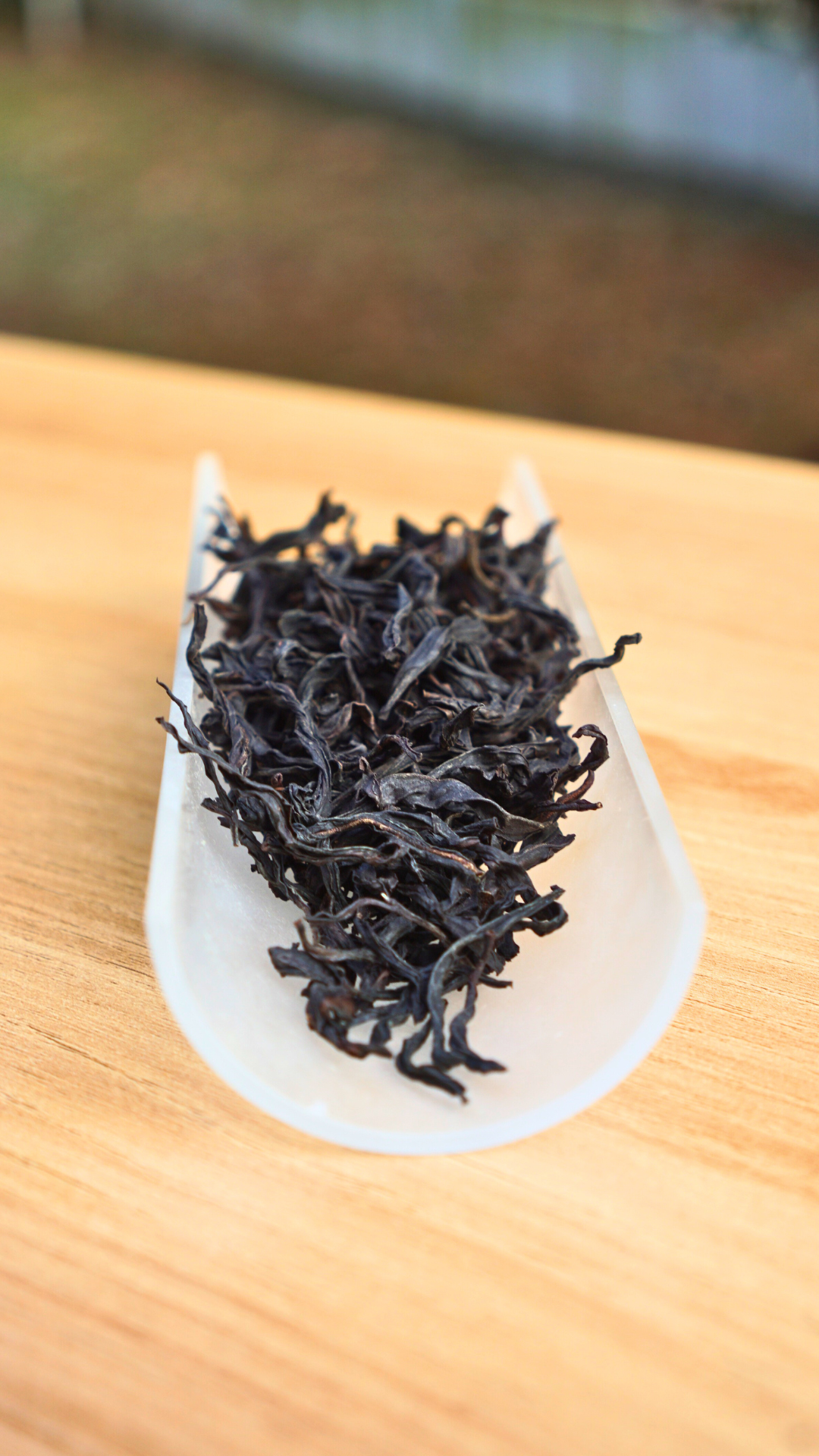
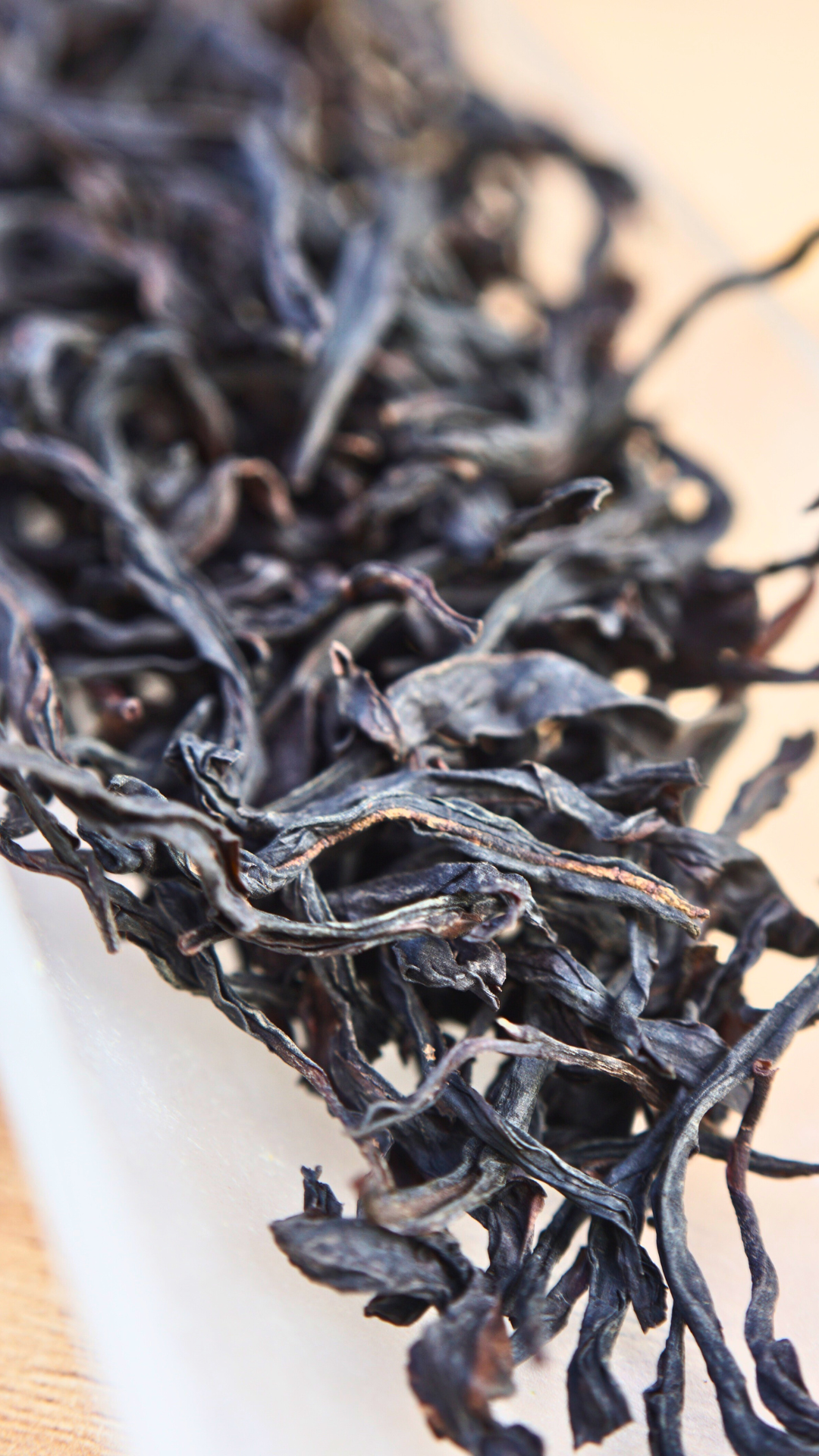
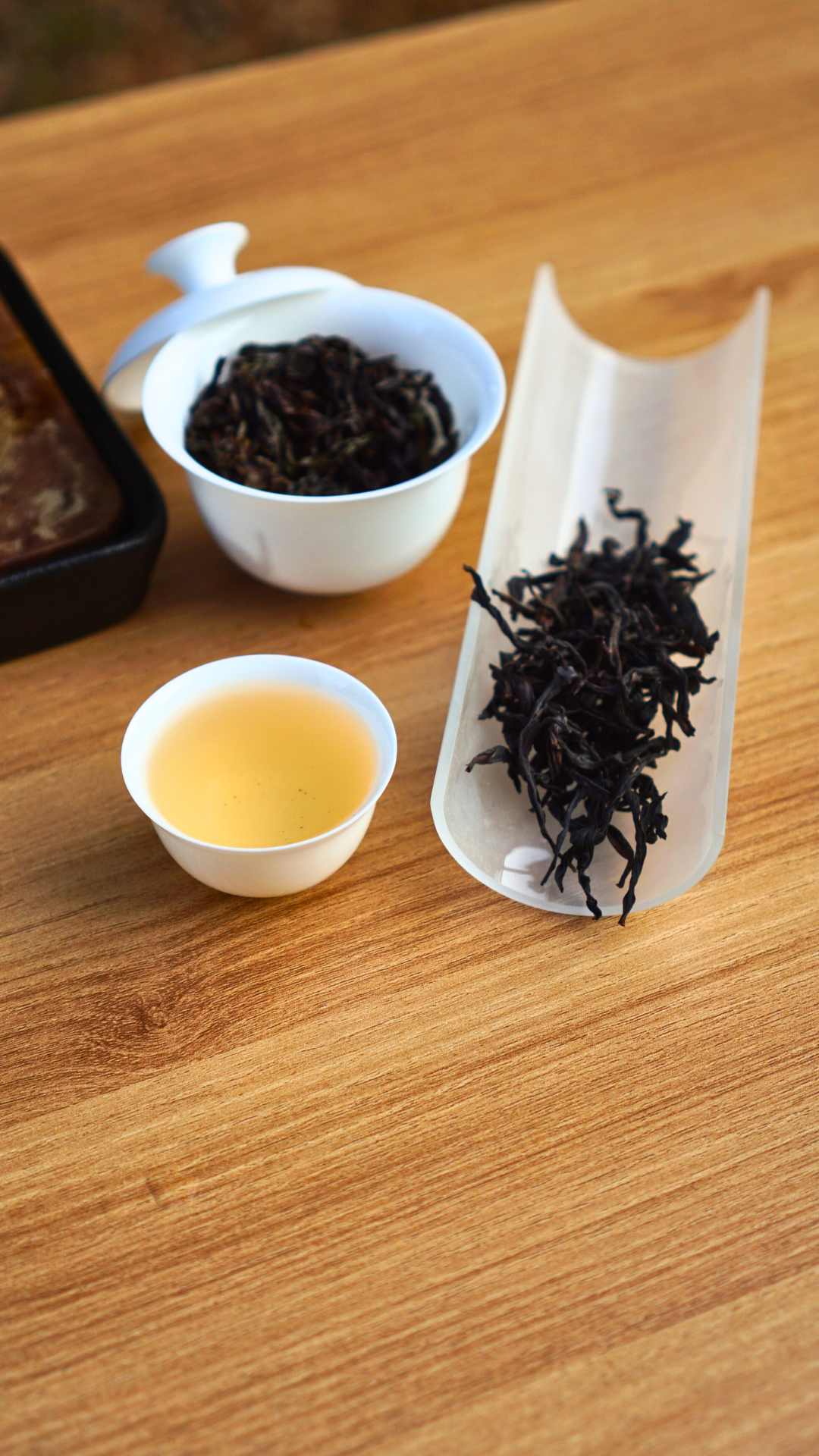
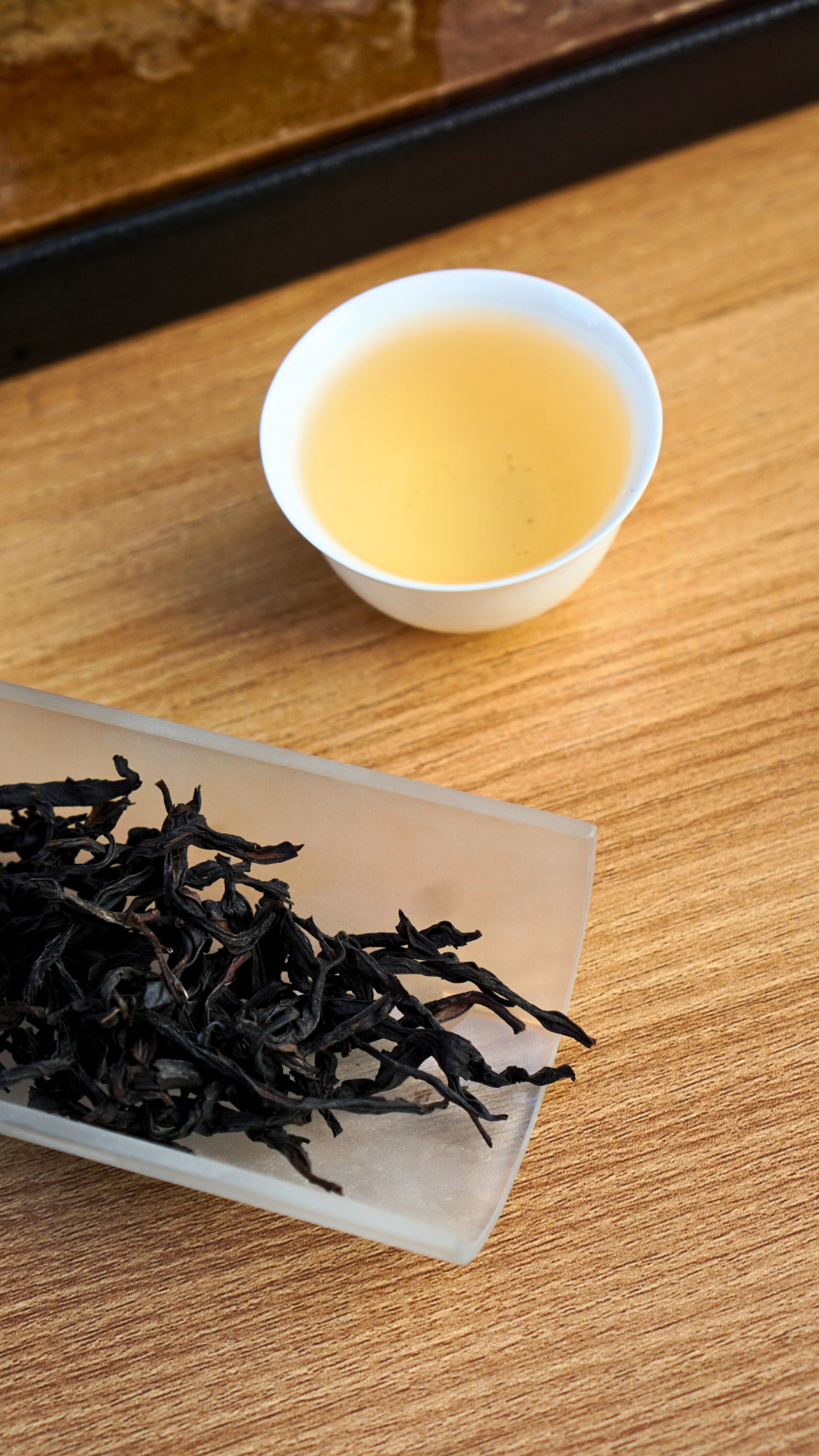
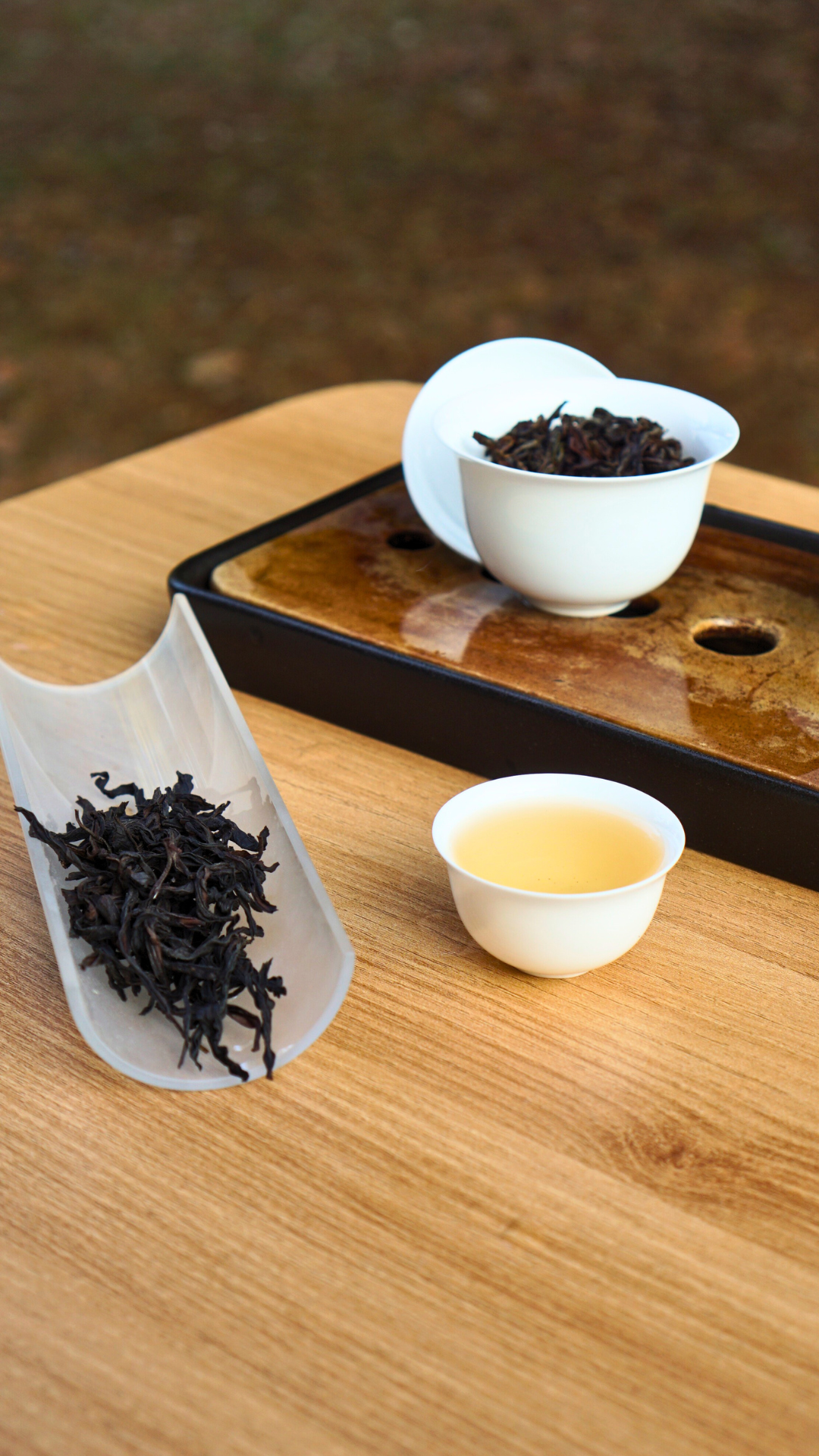
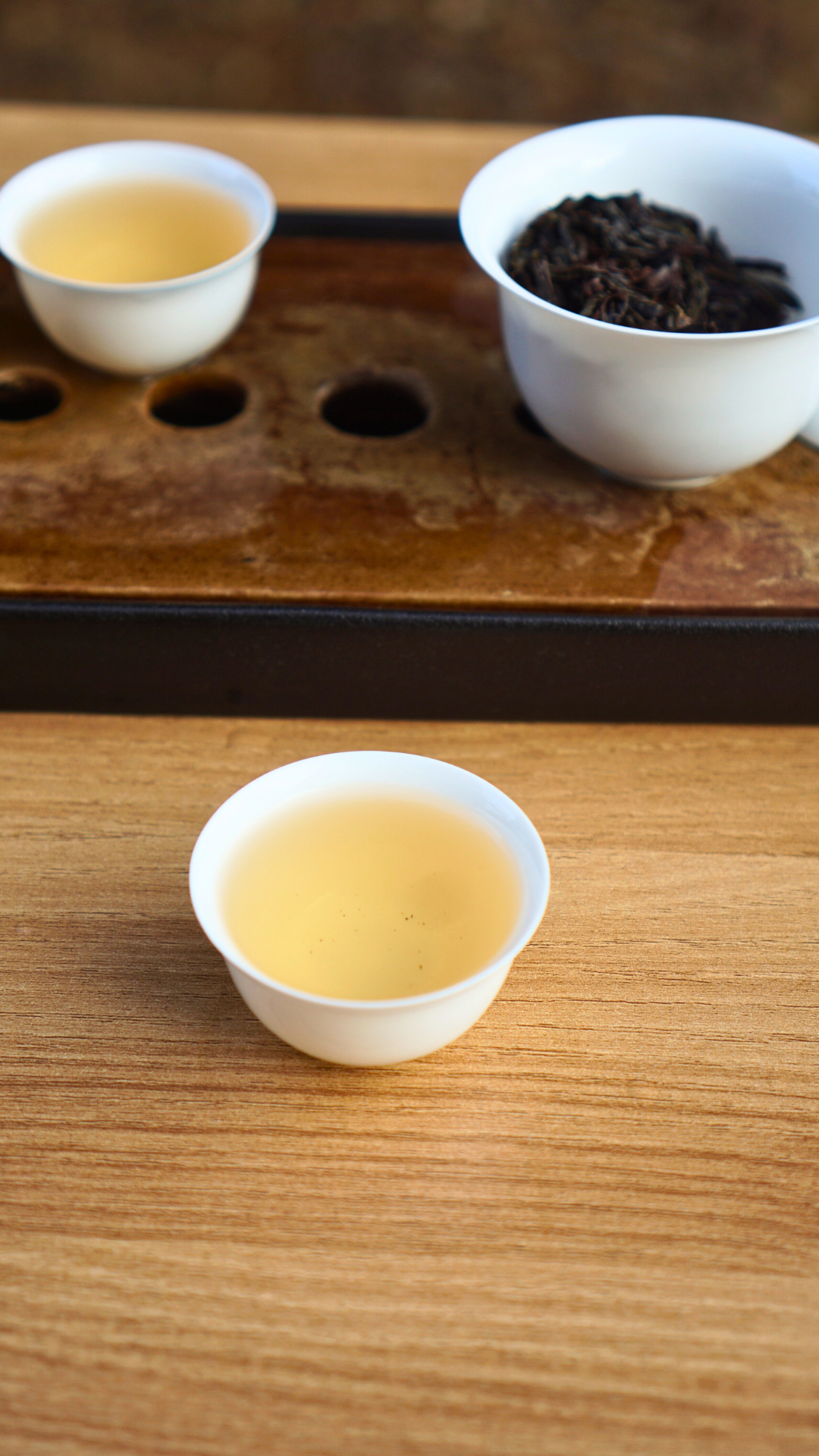
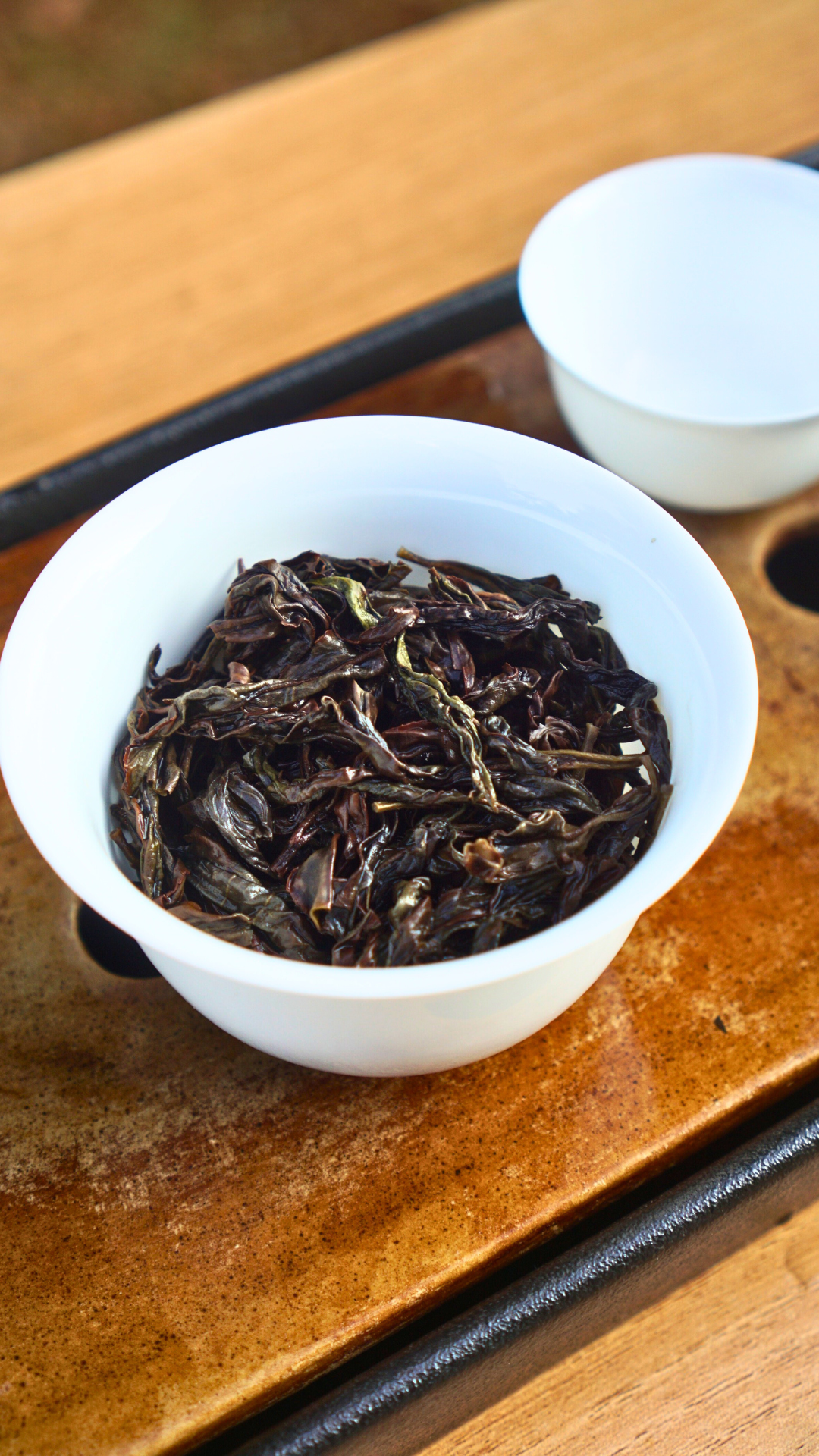
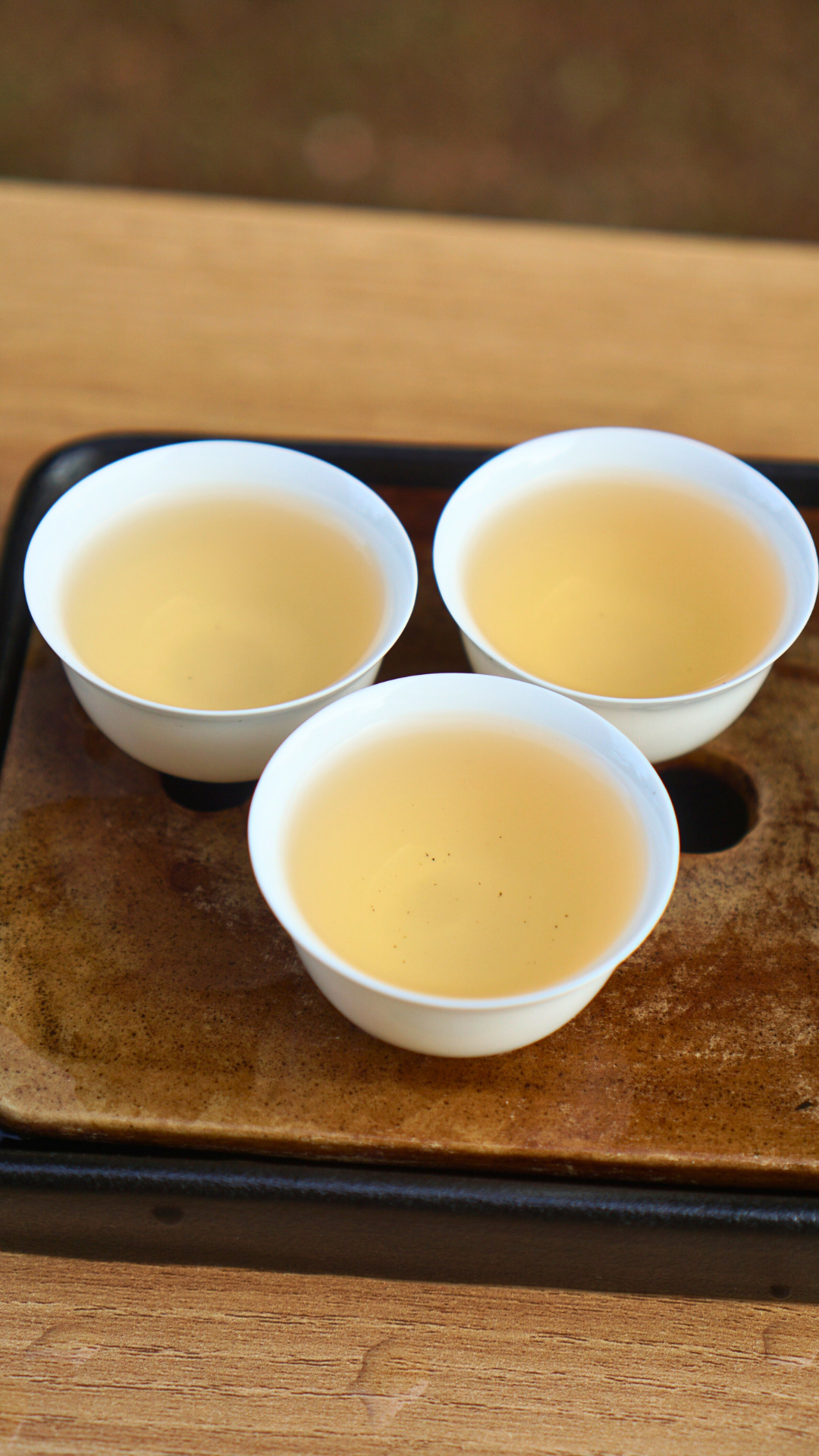
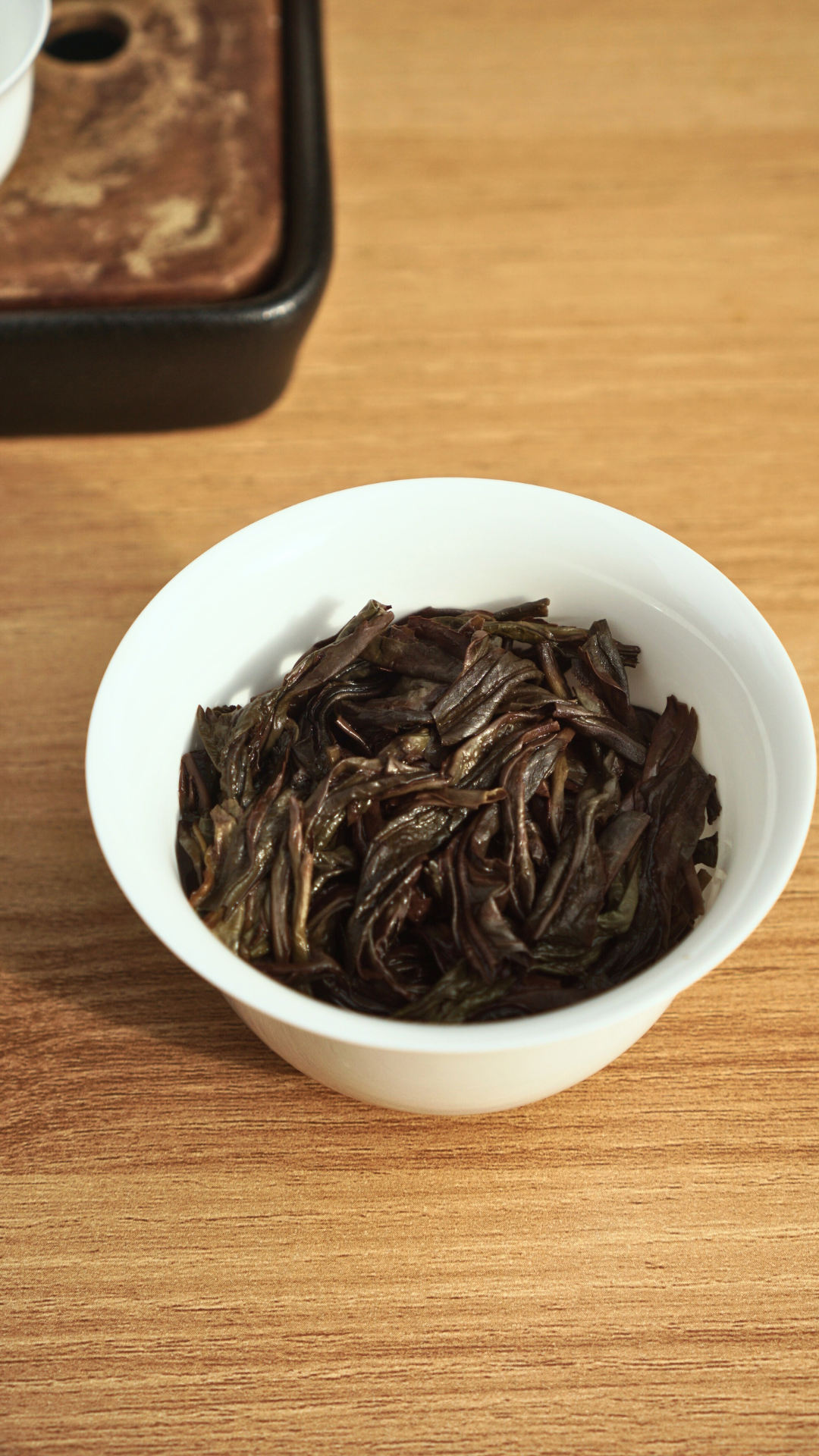
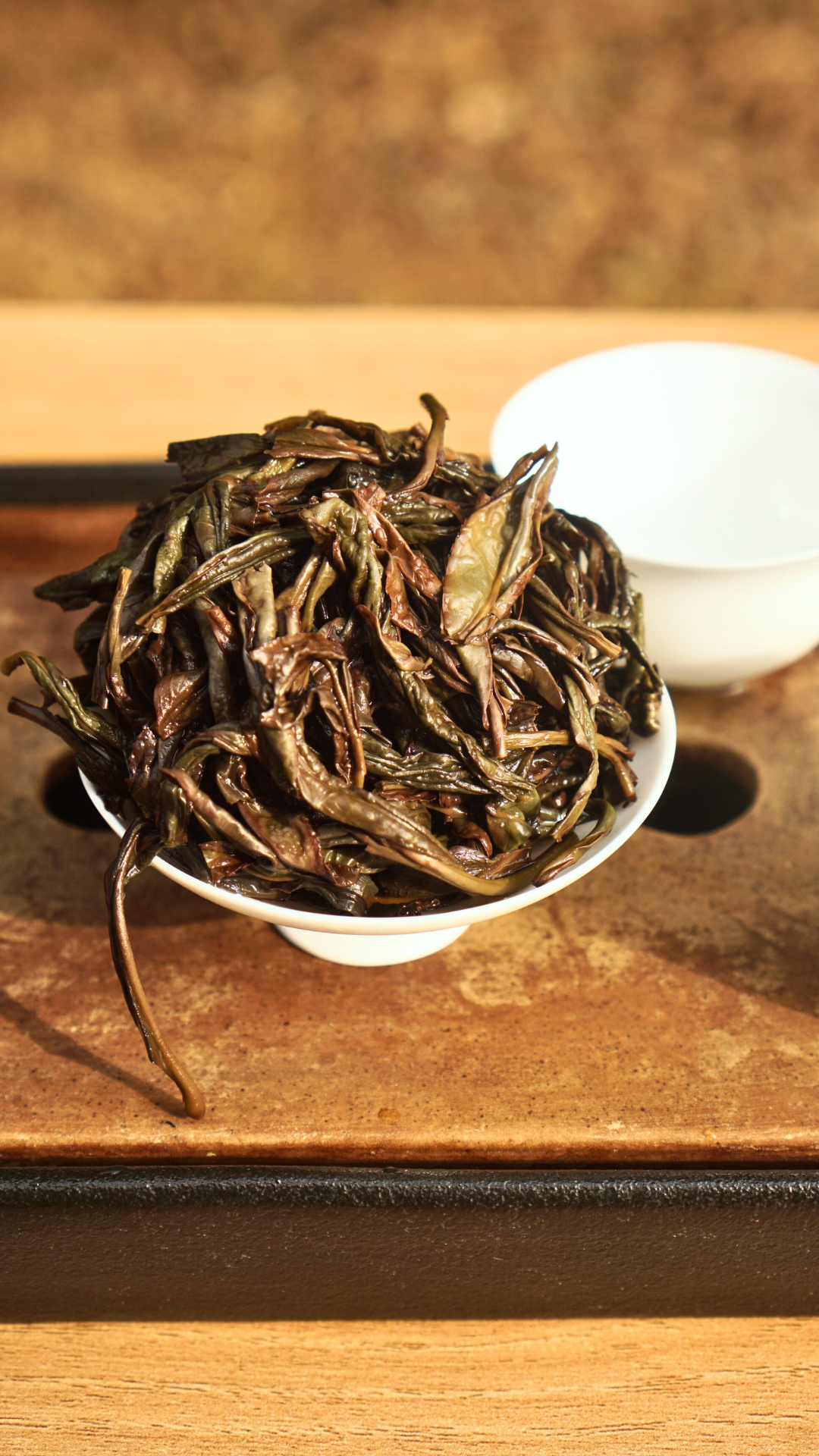
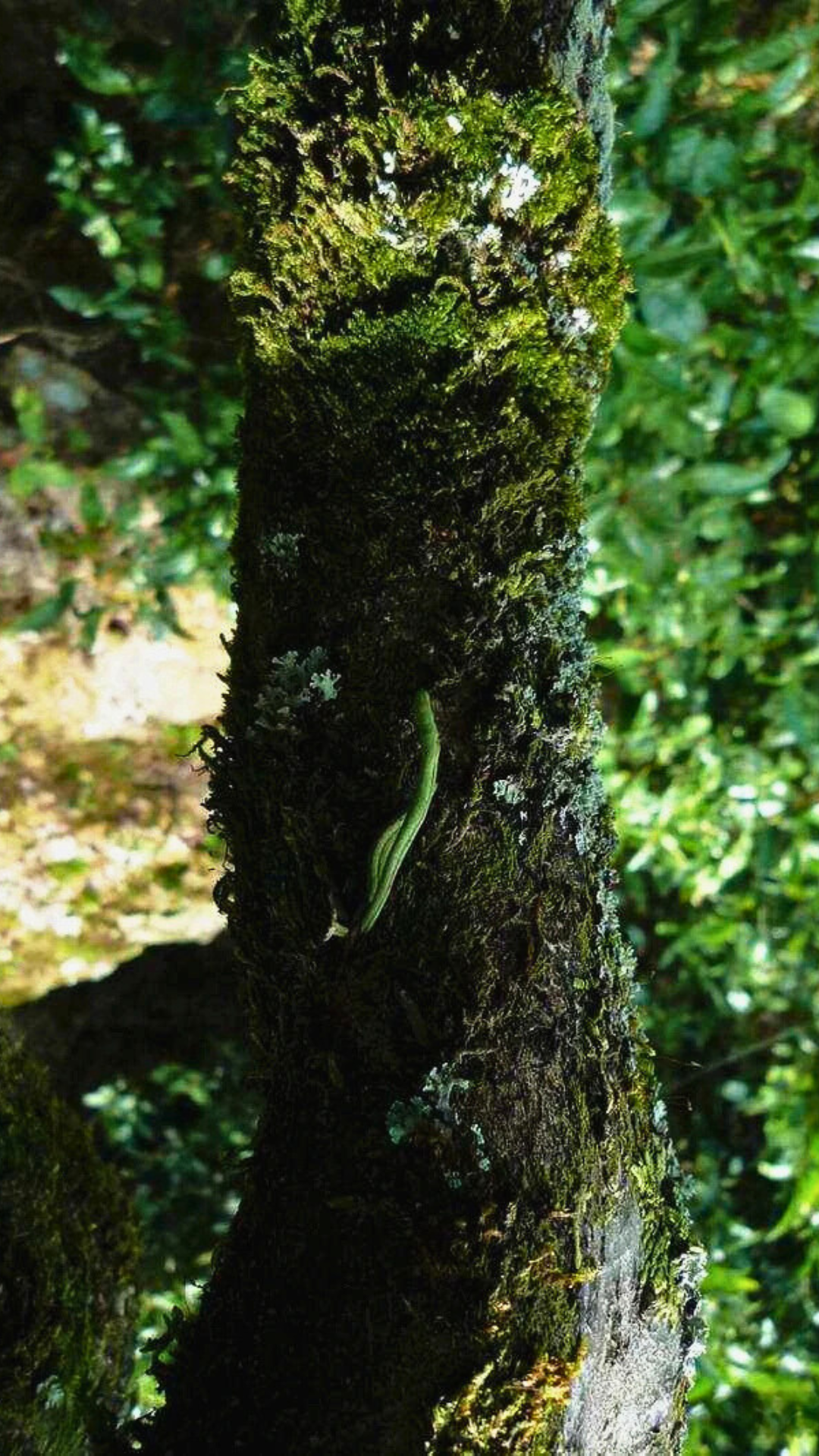
This Mi Lan Xiang is very different from what I’ve had before. The color is darker; what I had before was closer to a deep green and had a strong roasted aroma. The taste was very fragrant upon entry, but is this really Mi Lan Xiang? I can only smell the orchid fragrance on the brewed leaves. This tea feels more like Wuyi Mountain tea to me.
The tea appears greener because it is lightly roasted, which is common for 'Xue Pian' Tea (tea harvested in winter). Due to the light roasting, the floral fragrance floats on the surface but lacks a lasting aftertaste. This particular Mi Lan Xiang is an early spring first harvest from old tea bushes, with medium roasting. When tasted carefully, it has a strong mountain charm and is very resilient to multiple infusions.
It has been a long time since I used my chaozhou teapot. It is most suitable for brewing dancong tea. I put in a bit too much tea, so the tea soup came out very strong, but it isn’t too bitter. It has a sweet aftertaste, which indicates that this tea is of very good quality and very durable for brewing.
Compared to Wuyi rock wulong, I prefer phoenix dancong wulong tea. It has a milder smoky flavor, more pronounced aroma, is easier to brew, and leaves a sweet aftertaste. It feels very pleasant.
After comparing several different types of mi lan xiang, this one satisfies me the most. The fragrance is the longest-lasting, and it can be steeped more than 10 times while the leaves still remain aromatic. If you smell carefully, there’s even a sweet, honey-like scent, just like its name "Honey Orchid".

